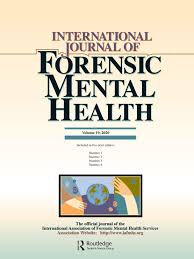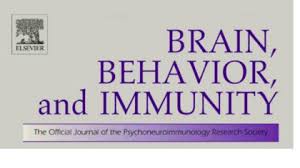Frontiers in Psychiatry (May 2020):
Biomarkers in Psychiatry: Concept, Definition, Types and Relevance to the Clinical Reality
Biomarkers in Psychiatry: Concept, Definition, Types and Relevance to the Clinical Reality
Biomarkers & Anti-social Personality Disorder
Below some Illustrative Examples.
See Also Orchid's 2020 Report on Anti-Social Personality Disorder & the Criminal Justice System
|
Some Ethical Considerations About the Use of Biomarkers for the Classification of Adult Antisocial Individuals (2018)
Abstract It has been argued that a biomarker-informed classification system for antisocial individuals has the potential to overcome many obstacles in current conceptualizations of forensic and psychiatric constructs and promises better targeted treatments. However, some have expressed ethical worries about the social impact of the use of biological information for classification. Many have discussed the ethical and legal issues related to possibilities of using biomarkers for predicting antisocial behavior. We argue that prediction should not raise the most pressing ethical worries. Instead, issues connected with “biologization”, such as stigmatization and negative effects on self-image, need more consideration. However, we conclude that also in this respect there are no principled ethical objections against the use of biomarkers to guide classification and treatment of adult antisocial individuals.* [*What is the reality of not recognizing the biological underpinnings of chronic criminal behavior -- the Death Penalty and/or Long Term Incarceration. Many states, including Colorado have moved away from the Death Penalty. We're not so naive as to think we can in 2020 move away from long term secure placements in every case -- but we could certainly do something much more humane than what we are currently doing. If you start to realize the real challenges that some facing, it is not that surprising our current systems struggle.] |
Contributions to the study of cortisol as a biomarker of the antisocial personality disorder (2015)
ABSTRACT Aim: assess in women with diagnosis of Turner´s syndrome who presented antisocial personality disorder, morning and evening levels of cortisol and its circadian slope, in order to contribute to the discussion about the relationship between personality disorders and cortisol secretion. Material and methods: we performed an ex post facto, retrospective, descriptive and cross-sectional study with two groups. The sample was intentional and conformed by women diagnosed with Turner´s Syndrome who presented antisocial personality disorder and their respective control cases with ages between 18-40. To assess personality disorders we used the Millon Clinical Multiaxial Inventory II. Salivary free cortisol was determined, during morning and evening, to analyze the functionality of the hypothalamicpituitary- adrenal axis. Results: lower levels of morning and evening cortisol were evidenced in participants diagnosed with Turner´s Syndrome so as the existence of statistically significant differences between the results of the clinical sample and the control sample. Discussion: results allow us to observe that women with diagnosis of Turner´s Syndrome who presented antisocial personality disorders exhibit a deregulation of the hypothalamic-pituitary-adrenal axis, expressed in an alteration of the circadian rhythm of cortisol with flattening of the morning slope. Obtained data allow us to emphasize the importance of further study of the relationship between genetic and environmental factors and their subsequent expression in the psychoneuroendocrine system, in a vulnerable population as the addressed. [Mayo Clinic: Turner syndrome, a condition that affects only females, results when one of the X chromosomes (sex chromosomes) is missing or partially missing. Turner syndrome can cause a variety of medical and developmental problems, including short height, failure of the ovaries to develop and heart defects.] |
|
Brain neuroreceptor density and personality traits: towards dimensional biomarkers for psychiatric disorders (2017)
Abstract Positron emission tomography has, for 30 years, been used in numerous case-control studies searching for hypothesized differences in the density of neuroreceptor or transporter proteins in psychiatric disorders such as schizophrenia and depression. In most cases, the results have not been conclusive. One reason could be the sizeable interindividual variability in biochemical markers, which in twin studies have shown to emanate from both environmental and genetic factors, leading to low statistical power for the detection of group effects. On the other hand, the same interindividual variability has served as an opportunity for correlative studies on the biological underpinning of behaviour. Using this approach, a series of studies has linked markers for the dopamine and serotonin system to personality traits associated with psychiatric conditions. Based on increasing evidence for the view that many psychopathological states represent extremes of a continuum rather than distinct categories, this research strategy may lead to new biological insights about the vulnerability to and pathophysiology of major psychiatric disorders.* This article is part of the theme issue 'Diverse perspectives on diversity: multi-disciplinary approaches to taxonomies of individual differences'. [*We included this paper because it underscores the US National Institute of Health's perspective that Mental Health Disorders are NOT DISTINCT CATEGORIES but BLURRED SYNDROMES affecting multiple domains of functionality] |
Maternal viral infection during pregnancy elicits anti-social behavior in neonatal piglet offspring independent of postnatal microglial cell activation (2017)
ABSTRACT Maternal infection during pregnancy increases risk for neurodevelopmental disorders and reduced stress resilience in offspring, but the mechanisms are not fully understood. We hypothesized that piglets born from gilts infected with a respiratory virus during late gestation would exhibit aberrant microglia activity, cognitive deficits and reduced sociability. Pregnant gilts were inoculated with porcine reproductive and respiratory syndrome virus (PRRSV; 5×105 TCID50 of live PRRSV) or saline at gestational day 76. Gilts infected with PRRSV exhibited fever (p<0.01) and reduced appetite (p<0.001) for 2weekspost-inoculation and were PRRSV-positive at parturition. Piglets born from infected and control gilts were weaned at postnatal day (PD) 1 and assigned to two groups. Group 1 was challenged with lipopolysaccharide (LPS, 5μg/kg body weight i.p.) or saline on PD 14 and tissues were collected. Group 2 was tested in a T-maze task to assess spatial learning and in a 3-chamber arena with unfamiliar conspecifics to assess social behavior from PD 14-27. Microglia (CD11b+ CD45low) isolated from Group 2 piglets at PD 28 were challenged ex vivo with LPS; a subset of cells was analyzed for MHCII expression. Maternal infection did not affect offspring circulating TNFα, IL-10, or cortisol levels basally or 4h post-LPS challenge. While performance in the T-maze task was not affected by maternal infection, both sociability and preference for social novelty were decreased in piglets from infected gilts. There was no effect of maternal infection on microglial MHCII expression or LPS-induced cytokine production. Taken together, these results suggest the reduced social behavior elicited by maternal infection is not due to aberrant microglia activity postnatally. |



